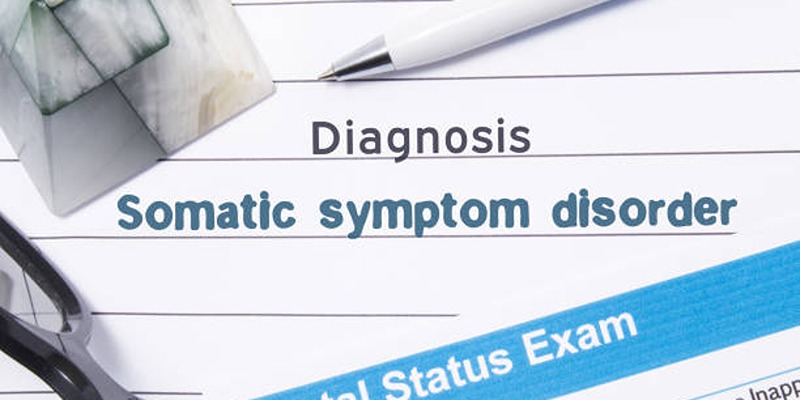Pain and Its Connection to Your Nervous System
Everyone suffers at some time. Pain is unpleasant yet required for life and wellness. The body's alarm system alerts us to danger and prompts action. Pain is a complex brain-body relationship that affects the nervous system. The nervous system interprets and responds to pain. Pain alerts us to injury, but the nervous system governs its intensity, duration, and sensation. Nerves convey messages; the brain interprets them; several circumstances affect the nervous system link.
What is the nervous system, and what it does?
Functions of the neurological system include self-regulation and speech production. Attached to the body via the spinal cord are the peripheral nerves. The spinal cord and brain make up what is known as the central nervous system.
The nervous system processes internal and exterior impulses to maintain the body's safety. This is made possible by the vast network of neurons that generate electrical impulses. These signals help find one's way, stay healthy, and detect danger.
Issues with the nervous system are painful. Pain receptors are activated when one cuts or touches something hot. The central nervous system receives pain signals from these receptors and processes them.

Central nervous system effects of pain:
The central nervous system controls pain perception. Pain may be brief or persistent. Most abrupt, acute pain is caused by injury or sickness. It usually goes away when the cause is treated. Chronic pain is long-lasting and unexplained. It typically indicates disease. Pain signals undergo complex central nervous system modifications. Nociceptors use peripheral nerves to convey signals to the spinal cord when recognizing injured tissue. The brain receives these crucial instructions from the spinal cord.
Pain is processed via the thalamus, cerebral cortex, and limbic system. The thalamus sends sensory input to the brain for examination through its sensory gateway. Your brain's touch center determines pain location and intensity, while your limbic system links pain to emotions, influencing your impression. Processing begins with signaling. Memory, emotion, and circumstance affect central nervous system damage. Emotions, hopes, and anxieties affect pain. Pain is linked to the nervous system.
Pain interpretation in the brain:
Brains sense and process pain. It processes external nervous system input and causes different pain in different people. Several brain regions are activated:
- Yes, the thalamus sends and receives pain signals. It sends info to cortical regions for processing.
- The somatosensory cortex processes sensory data. Its assistance may help identify the location, severity, and kind of pain (sharp, dull, searing, or hammering).
- The ACC controls pain emotion. Because it links pain to emotions, it changes our reactions.
- The insula integrates mental and physical signals to report body sensations like discomfort. People perceive pain differently, making it unpleasant and upsetting.
- We make choices and control emotions in the prefrontal cortex. Focus and anticipation may impact discomfort.
- This complicated network of brain regions causes physical, emotional, and mental pain. Past concerns and worries alter pain perception. Brain function is crucial to pain perception.

Spinal Cord and Back Pain:
The spinal cord transmits pain to the brain, ensuring neurological function. After finding a painful trigger, follow these steps:
- Nociceptor cells in the skin, muscles, and organs transmit electrical signals to the spinal cord via sensitive neurons when tissue is injured. Slow, excruciating pain travels via C-delta fibers, whereas intense, localized pain uses A-delta fibers.
- Lower-level neurons receive spinal cord pain signals. Spinal cord pain transmission may be changed in several ways. Spinal cord interneurons may amplify or attenuate impulses, affecting pain.
- The spinal cord helps pain reflexes. Sensory neurons may directly connect with spinal cord muscle-controlling neurons after an injury. Your brain may automatically warn you to avoid hot things.
- After processing, spinal cord second-order neurons send brain pain signals via expanding channels. They include the spinothalamic tract. It feeds temperature and pain signals to the thalamus and other brain centers.
- The spinal cord delivers and receives pain signals for processing. Safety depends on reflexes controlled by the neurological system.
How do nerves affect pain?
The nervous system communicates with the body via pain signals. How they work:
- Nerve endings called "nociceptors" detect harmful impulses. Chemicals, heat, and mechanical forces including inflammation, burns, and cuts, may damage these sensors. Activated nociceptors send peripheral nerve impulses to the spinal cord.
- Nerves link the spinal cord to the whole body. Nociceptors are connected to the brain and spinal cord via nerves. Afferent peripheral nerve fibers provide brain impulses to muscles, whereas efferent fibers transmit brain instructions.
- Pain triggers glutamate and substance P release from nociceptors. Neurotransmitters boost nerve pain transmission. Pain type determines A-delta and C-fibre impulses.
- Neuroplasticity may help the nervous system handle stress or pain. Neuroplasticity may increase or decrease pain sensitivity.
- Pain is detected and transmitted by the neurological system. Communication helps the body detect and react to threats.
Effects of central pain sensitization:
- Central nervous system changes increase pain. This is central sensitization. Pain signals alter central nervous system sensitivity and perception. Several causes may produce central sensitization.
- Constant pain may affect your brain, making you more susceptible to central nervous system suffering. It may affect persons with chronic pain, such as arthritis, back pain, or headaches.
- Nervous system inflammation may make the brain and spinal cord more responsive. Several variables, including pro-inflammatory cytokines, may enhance neuron excitability and discomfort.
- Central sensitization alters pain-related brain circuits. Even without pain, this may increase pain pathways and signals.
- Mental and emotional issues may cause central sensitization. Stress, depression, and anxiety may worsen pain and increase chronicity.
- Central sensitization alters brain pain processing. Side effects include hyperalgesia and allodynia.
- To treat pain, one must understand central sensitization. Central sensitization may not respond to conventional painkillers. Medication, psychotherapy, and physical therapy may help.
Conclusion:
Biological, psychological, and social factors complicate neuronal pain response. It focuses on pain identification, analysis, and comprehension. Because of perception and treatment, pain is more than physical. History and emotions complicate it. Understanding these systems reduces pain and promotes whole-person care. If physicians understood the neurological system's complex link with pain, they may develop novel remedies. Suffering scares medical and philosophical intellectuals. Learning how the nervous system influences acute and chronic pain may enhance quality of life.












